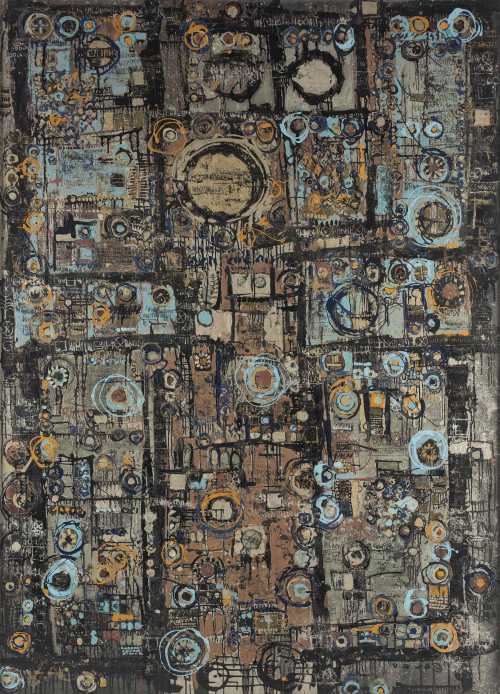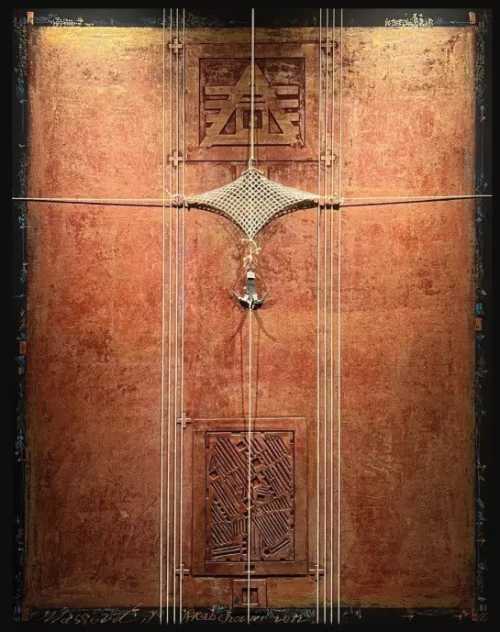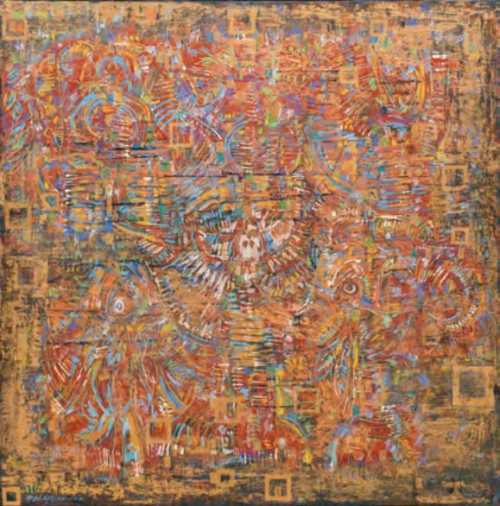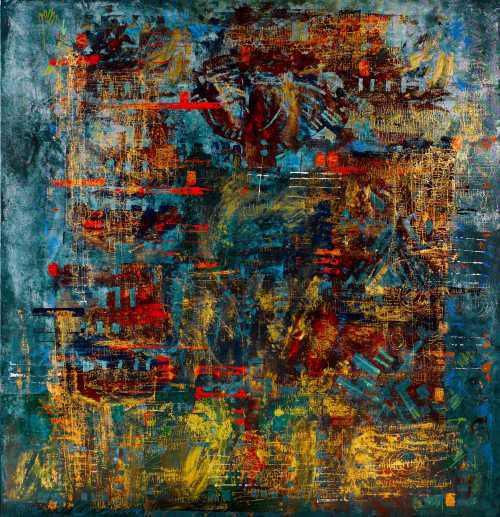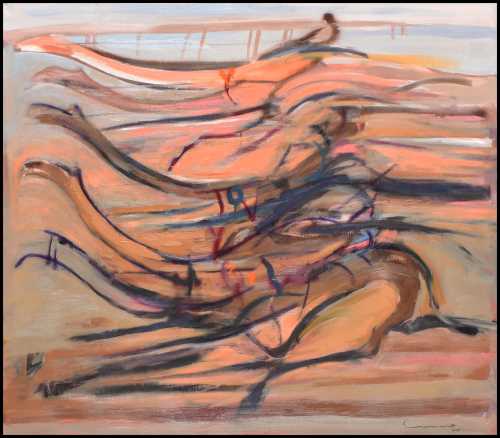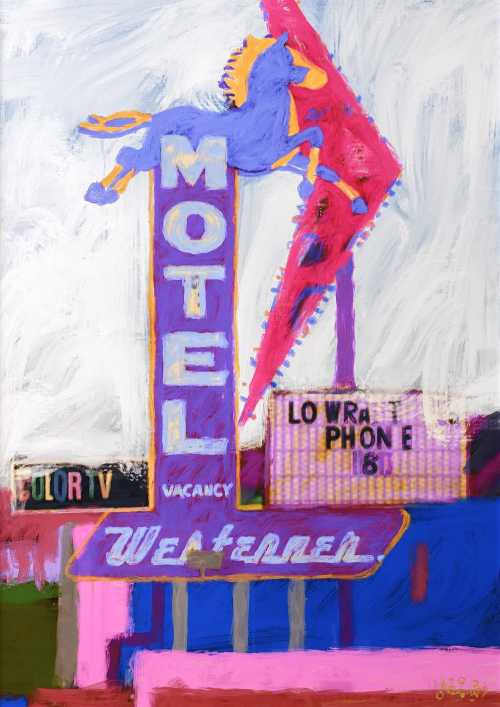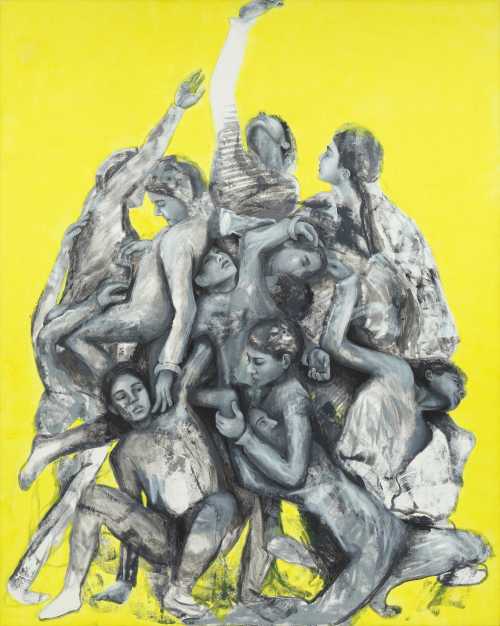- Soleil d’Or
- Oil, acrylic and gold paint on canvas
- Painting
- 130.5 * 181 cm
- signed in Arabic (upper right), signed and titled 'SOLEIL D'OR ARABSHAHI' (on the stretcher, on the reverse)
16 May 2023
Estimation
$30,000
-
$40,000
Realized Price
$100,800
188%
Artwork Description
Massoud Arabshahi sources his inspirations from Achaemenid and Assyrian art, as well as Babylonian carvings and inscriptions. By combining motifs from these seemingly different cultures with those of modern abstractions, Arabshahi is able to create a composition that pushes two and three dimensional boundaries. He questions language being the sole means of expression and there is a clear and deliberate thoughtful application of motifs resulting from careful studies of Persian and Islamic art history.
In the present piece, Soleil d’Or, the artist uses an earth tone palette, along with a subtle use of gold leaf to prove his respect for and inspiration by nature. By employing symbols juxtaposed with geometrical symbols such as circles, squares, curves and spirals, he becomes an officiate of the marriage between tradition and modernity. Applying a cosmic spatial equilibrium, expressing movement and radiance, Massoud Arabshahi combines his search for meaning and direction in today's art world with his continuous urge to question the beliefs and symbols of ancient Persia's iconology and visual vocabulary. His work is unique and rare, as are his ideas and outtake on what the Middle East historically.
Arabshahi is known for using celestial symbols in his work. The circle represents the universe, in its wholeness and perfection. In Islamic art the circle represents the vaulted sky and divine light; the square manifests the earth and perfect stability. A square inside a circle or a circle inside a square represents a transformation of the spherical form of the sky on a rectangular Earth or vice versa. He reinterprets these ancient symbols and applies them within a modern context. In Islam, these symbols often signify the union of all states of being, sublime identity and horizontal and vertical expansion. The vertical line is the embodiment of celestial, spiritual, subjective, positive and active feature, whereas the horizontal line demonstrates earthly, logical, passive and negative aspects.
Arabshahi explores various aspects of his Persian heritage, and his art is correspondingly loaded with symbols such as the lotus, wheel, the shining sun, the tree of life, and pseudo-cuneiform, often juxtaposed with geometrical symbols such as circles, squares, curves, and spirals. The result is a confluence between past and present.
Massoud Arabshahi employs a wide range of media from gold leaf to oil, and a range of symbols including those of ancient Mesopotamia, and also more universal ones. Similarly, his brushstrokes range from heavy impasto to the very lightest. This sale contains five works by Arabshahi, each one very different, demonstrating the extraordinary range of this artist.
In the present piece, Soleil d’Or, the artist uses an earth tone palette, along with a subtle use of gold leaf to prove his respect for and inspiration by nature. By employing symbols juxtaposed with geometrical symbols such as circles, squares, curves and spirals, he becomes an officiate of the marriage between tradition and modernity. Applying a cosmic spatial equilibrium, expressing movement and radiance, Massoud Arabshahi combines his search for meaning and direction in today's art world with his continuous urge to question the beliefs and symbols of ancient Persia's iconology and visual vocabulary. His work is unique and rare, as are his ideas and outtake on what the Middle East historically.
Arabshahi is known for using celestial symbols in his work. The circle represents the universe, in its wholeness and perfection. In Islamic art the circle represents the vaulted sky and divine light; the square manifests the earth and perfect stability. A square inside a circle or a circle inside a square represents a transformation of the spherical form of the sky on a rectangular Earth or vice versa. He reinterprets these ancient symbols and applies them within a modern context. In Islam, these symbols often signify the union of all states of being, sublime identity and horizontal and vertical expansion. The vertical line is the embodiment of celestial, spiritual, subjective, positive and active feature, whereas the horizontal line demonstrates earthly, logical, passive and negative aspects.
Arabshahi explores various aspects of his Persian heritage, and his art is correspondingly loaded with symbols such as the lotus, wheel, the shining sun, the tree of life, and pseudo-cuneiform, often juxtaposed with geometrical symbols such as circles, squares, curves, and spirals. The result is a confluence between past and present.
Massoud Arabshahi employs a wide range of media from gold leaf to oil, and a range of symbols including those of ancient Mesopotamia, and also more universal ones. Similarly, his brushstrokes range from heavy impasto to the very lightest. This sale contains five works by Arabshahi, each one very different, demonstrating the extraordinary range of this artist.
Realized Price
38,621 USD
Min Estimate
25,757 USD
Max Estimate
34,732 USD
Average Artwork Worth
+26.294%
Average Growth of Artwork Worth
Sales Performance Against Estimates
Average & Median Sold Lot Value
2021 - 2025
Performance vs. Estimate
2021 - 2025
Sell-through Rate
2021 - 2025
